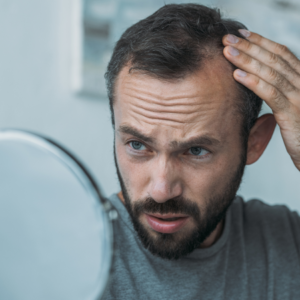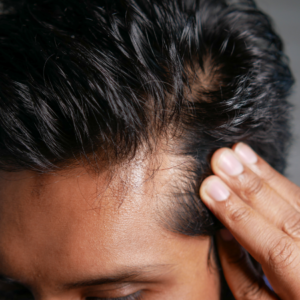Hair Loss Solutions – Understanding Causes and Treatments
There’s nothing more distressing than noticing hair loss, whether it’s gradual thinning or sudden shedding. Understanding the causes behind hair loss is crucial in finding the right treatment to address the issue effectively. From genetics and hormonal imbalances to stress and diet, various factors can contribute to hair loss. In this blog post, we will explore into the common causes of hair loss and explore the most effective treatments available to help you combat this common concern. By gaining a deeper understanding of the underlying reasons for hair loss, you can make informed decisions about the best solutions for your specific needs.

Understanding Hair Loss
Your hair is a significant part of your identity, and experiencing hair loss can be distressing. It’s essential to understand the causes of hair loss and the available treatments to address this common concern. By delving into the mechanisms of hair growth and the factors that contribute to hair loss, you can make informed decisions about managing this condition.
The Hair Growth Cycle
For many people, hair loss is a natural part of the hair growth cycle. The hair growth cycle consists of three phases: anagen (growth phase), catagen (transitional phase), and telogen (resting phase). Each hair follicle operates independently, which means that your hair is constantly in various stages of the growth cycle. Understanding this cycle is essential in comprehending why hair loss occurs and how treatments can target specific stages to promote hair regrowth.
One common cause of hair loss is genetics. If you have a family history of pattern baldness, you are more likely to experience hair loss as you age. Hormonal imbalances, certain medical conditions, and stress can also contribute to hair loss. By identifying the root cause of your hair loss, you can determine the most effective treatment plan to address the issue and potentially reverse the effects.
Common Causes of Hair Loss
Growth in hair loss prevalence can also be linked to dietary deficiencies, such as insufficient iron or protein intake. These nutrients are vital for healthy hair growth, and deficiencies can result in weakened hair follicles and increased shedding. Additionally, environmental factors like exposure to pollutants and harsh styling practices can damage the hair and lead to hair loss over time.

Diagnosing Hair Loss
Keep in mind that diagnosing the underlying cause of hair loss is essential to determine the most effective treatment. There are various factors that can contribute to hair loss, including genetics, hormonal changes, medical conditions, and stress. Understanding the root cause of hair loss can guide medical professionals in providing tailored solutions for individuals experiencing this distressing issue.
When to See a Specialist
Specialist intervention is recommended when hair loss becomes excessive or significantly impacts one’s self-esteem. If you notice a substantial amount of hair shedding or thinning, it may be time to consult a dermatologist or a trichologist specializing in hair and scalp conditions. These specialists are equipped with the knowledge and expertise to diagnose the specific cause of hair loss and recommend appropriate treatment options.
Seeking professional help is also advisable if you experience sudden hair loss, hair breakage, scalp infections, or if hair loss is accompanied by other concerning symptoms. A timely consultation with a hair loss specialist can help prevent further hair damage and address the issue promptly.
What to Expect During the Consultation
Diagnosing the cause of hair loss typically involves a thorough consultation with the specialist. During the consultation, the specialist will review your medical history, assess your current hair health, and may conduct additional tests such as blood work or scalp analysis to determine the underlying factors contributing to hair loss. It is important to provide detailed information about your lifestyle, diet, stress levels, and any medications you are taking to help the specialist form an accurate diagnosis.

Treatment Options for Hair Loss
Noticing hair loss can be distressing, but there are various treatment options available to address the issue. Understanding the causes of hair loss is crucial in determining the most effective treatment plan. From non-surgical remedies to surgical interventions, individuals dealing with hair loss have several options to explore.
Non-Surgical Treatments
The first line of defense against hair loss often involves non-surgical treatments. These can include topical solutions, such as minoxidil, which is FDA-approved for promoting hair growth. Other options may include oral medications like finasteride, which works by inhibiting the hormone that causes hair loss.
Additionally, low-level laser therapy and platelet-rich plasma (PRP) treatments have gained popularity in recent years for their ability to stimulate hair follicles and promote regrowth. These non-invasive treatments can be effective for some individuals in slowing down hair loss and improving overall hair health.
Surgical Treatments
Treatments such as hair transplant surgery offer a more permanent solution for individuals with advanced hair loss. During a hair transplant, hair follicles from donor areas are transplanted to thinning or balding areas, creating a natural-looking result. This surgical procedure has evolved significantly over the years, with techniques like follicular unit extraction (FUE) providing a minimally invasive option with impressive outcomes.
This advanced surgical procedure involves extracting individual hair follicles from the donor area and transplanting them to the recipient area. The results are natural-looking and long-lasting, making hair transplant surgery a popular choice for those seeking a more permanent solution to hair loss.
Alternative and Supportive Treatments
Alternative and supportive treatments can complement traditional hair loss remedies and promote healthy hair growth. These can include dietary supplements like biotin and omega-3 fatty acids, which are known to support hair health. Herbal remedies, scalp massages, and aromatherapy are also popular options for individuals looking to improve the condition of their hair.
Moreover, stress management techniques and lifestyle changes can play a significant role in addressing hair loss. Reducing stress levels, maintaining a balanced diet, and incorporating regular exercise can all contribute to healthier hair growth and overall well-being.

Preventive Measures and Healthy Hair Practices
Nutrition and Hair Health
Measures to support healthy hair growth start from within. A balanced diet rich in essential nutrients such as vitamins A, C, D, E, zinc, iron, and omega-3 fatty acids is crucial for maintaining strong and lustrous hair. Including foods like leafy greens, nuts, seeds, fish, and poultry in your daily meals can promote hair health and prevent deficiencies that may lead to hair loss.
Poor nutrition can contribute to hair thinning and loss, so it is essential to pay attention to what you eat. Additionally, staying hydrated by drinking an adequate amount of water each day can help keep your scalp and hair follicles healthy, supporting optimal hair growth.
Lifestyle Changes to Prevent Hair Loss
An early sign of hair loss could be stress or hormonal imbalances. Stress can disrupt the hair growth cycle, leading to shedding and thinning. Managing stress through practices like meditation, yoga, or regular exercise can help prevent excessive hair fall due to psychological factors. Furthermore, incorporating scalp massages into your routine can improve blood circulation to the hair follicles and promote healthy hair growth.
Preventive measures also include avoiding hairstyles that pull on the hairline or using excessive heat or chemical treatments. Opt for gentle hair care products and minimize the use of styling tools to prevent damage to the hair shaft. Protecting your hair from environmental aggressors like sun exposure and pollution is also essential to maintain its strength and vitality.

Conclusion
Now that we have probed into the various causes of hair loss and explored the treatments available, it is evident that understanding the root of the issue is crucial in finding an effective solution. Whether it be genetic factors, hormonal imbalances, or lifestyle choices, there are options such as medications, topical treatments, and procedures like hair transplants that can help combat hair loss. By consulting with a healthcare professional and exploring different treatments, individuals experiencing hair loss can take proactive steps towards maintaining healthy hair and boosting their confidence.
Dr Eric Berg – How to Regrow Hair
How to Regrow Your Hair – Vital Update
